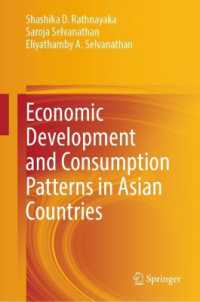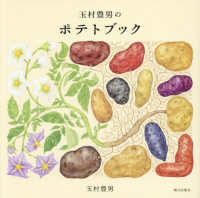- ホーム
- > 洋書
- > 英文書
- > Science / Mathematics
Full Description
This book uses art photography as a point of departure for learning about physics, while also using physics as a point of departure for asking fundamental questions about the nature of photography as an art. Although not a how-to manual, the topics center around hands-on applications, sometimes illustrated by photographic processes that are inexpensive and easily accessible to students (including a versatile new process developed by the author, and first described in print in this series). A central theme is the connection between the physical interaction of light and matter on the one hand, and the artistry of the photographic processes and their results on the other. This is the third volume in this three-part series that uses art photography as a point of departure for learning about physics, while also using physics as a point of departure for asking fundamental questions about the nature of photography as an art. It focuses on the physics and chemistry of photographic light-sensitive materials, as well as the human retina. It also considers the fundamental nature of digital photography and its relationship to the analog photography that preceded it.
Contents
Preface
Acknowledgements
Author biography
Part I The physics of light detectors
1. Detectors and the characteristic curve
2. Silver gelatin photochemical detectors
3. Other photochemical detectors
4. Some interesting technical details
5. A brief diversion into the weird world of the photon
6. Digital photoelectric detectors
7. Unusual detectors and 3D photography
Part II Photography as an art and the meaning of digital
8. Comparison of digital and film techniques
9. The digital and the analog
10. Is digital manipulation cheating?
11. The image, the object, and the process
12. Towards an art and science of nature
Appendices








